Walking through London yesterday, I was struck by the very high concentration of war memorials scattered across the city. We are all familiar with the imposing monolithic stones across the city that serve as a focal point on Remembrance Day. Less well known are the hundreds of statues, plaques and sculptures that mark the achievements of a particular soldier or serve as a monument to one of the many nations that fought alongside the British in a campaign. They can be found in every public park, on street corners and even on traffic islands.
So why this emphasis on commemorating our war dead, and how does it reflect on our society? What are the motives for spending money and using a valuable city space to erect a statue that relates, on the face of it, to another era?
At a superficial level, a monument becomes a piece of public art and a tourist attraction. Wandering along the Mall in Washington DC it is impossible not be fascinated by the many sculptures, statues and buildings that mark America’s conflicts throughout the 20th century. Stopping to comtemplate the tragedies that affected those on all sides of those wars is where these visually striking objects become so much more than mere art.
Memorials of all types also serve as a public focus for ceremonies that remember the sacrifices that troops have made in fighting their nation’s battles. None is more poignant than the Menin Gate in Ypres, where every night come rain or shine the Last Post is played and wreaths are laid at the monument for the hundreds of thousands of men who died in the first world war. We visited on a bitterly cold autumn night and there were hundreds in attendance. It was hugely moving to see the old veterans of other wars make their way to this Belgian town to show respect to those who had not survived their war.
And the small monuments, often reflecting a particular nationality’s contribution or an individual soldier, must carry great meaning to those who identify with them, whether by shared citizenship or by family links. In many of Britain’s wars the British troops fought alongside many from other parts of the commonwealth and those conscripted from its colonies. It is fitting that these are prominently remembered in many of the memorials in the UK.
I have no doubt that for many councils the question of public relations with their constituents plays a major part in commissioning a memorial. Wacky modern scultpures will elicit complaints of ‘wasting our money’ but there is rarely an outcry over a war memorial. Indeed the failure to commemorate a particular link to a group of fallen citizens can provoke a lot of anger. This was witnessed recently in Bethnal Green, where an ongoing campaign to have a memorial for those who died in the wartime tragedy on the stairs of the tube station continues.
While our cities rush headlong into mass regeneration and modernisation, it is more important than ever to remember our past. It’s reassuring that the monuments to those who fought and lost their lives for our nations are still considered sacrosanct.
The vast majority of those of us alive today have not fought in a war. We have been blessed with decades of relative peace in western Europe, and north America. Most of our young people will hope to leave their legacy through the many bold and striking symbols of the 21st century that surround us; it is more important than ever that we remember those of past generations who lived in altogether harder times and who left their legacy with the ultimate sacrifice.





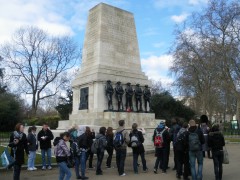
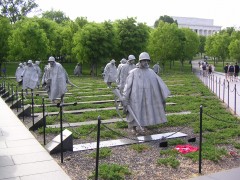
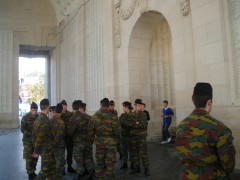
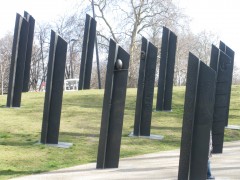
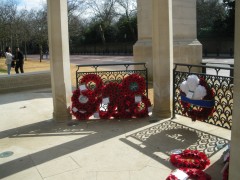

Interesting post.Just last week I posted about public statues in the UK, as well–not about war dead, but about trying to find women in the mix:
http://www.newelty.com/2010/03/11/girls-girls-girls/
It will be fascinating to see–now that the UK, the US, and others–have female soldiers, if the “face” of these war statues will be changing.
Good post Andy,
War memorials are vitally important as we must never forget the sacrifices made by these brave men and women.
War memorials are chilling reminders of the tradegy of war, in particular the loss of young life. We must always strive to settle disputes first through diplomacy because war is so awful. I have recently been to Vimy, Dieppe, and Juno Beach – tremendously sad, but important motivation to work for peace. Thanks for your thoughtful posting.
Thanks all for the valuable comments, and thanks Lia for sharing the link.
War memorials are definitely important to society. I can’t think of a better way to remind people of the importance of peace.
Agree Kelsey. I would love to visit the memorial in Hiroshima too. I can imagine it’s a pretty emotional place.
As a former soldier, I find them difficult places. Remembrance and its ceremony need to be kept separate from nostalgia. Difficult in a country still obsessed with documentaries about ‘the War’, and default mid-afternoon movies about ‘zee Germans’. The smaller country memorials are the most touching. Resting having cycled, I stepped into one of Sussex’s many village chapels. A dozen names engraved – a third were of the same family – for a hamlet of ten houses… . Good post Andy; travelling is never just about sunsets and backpacks, we walk through history, too.